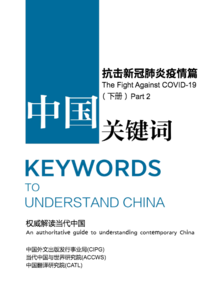
书刊名称:Keywords to Understand China: The Fight Against COVID-19 (Part II)
发布作者:Wilson
发布时间:2020-06-04
阅读次数:9241
书刊简介:《中国关键词:抗击新冠肺炎疫情篇》(下册)中英文
其他信息:《Keywords to Understand China: The Fight Against COVID-19 (Part II)》电子宣传画册作品由Wilson于2020-06-04制作并发布于FLBOOK电子杂志制作平台。FLBOOK是一款HTML5电子杂志、电子书刊、电子画册制作平台,使用FLBOOK可以快速制作和发布电子书刊作品。
阅读3D版